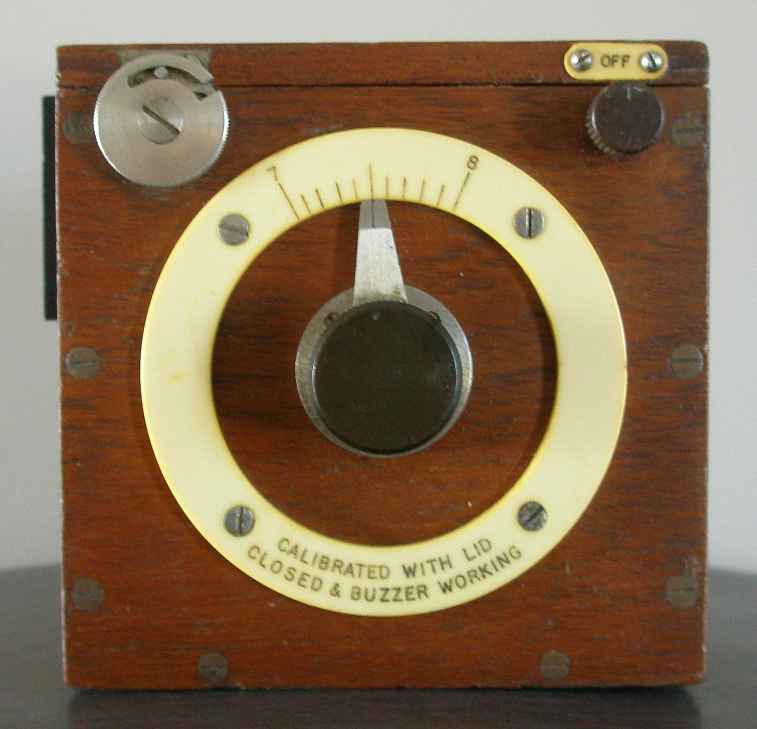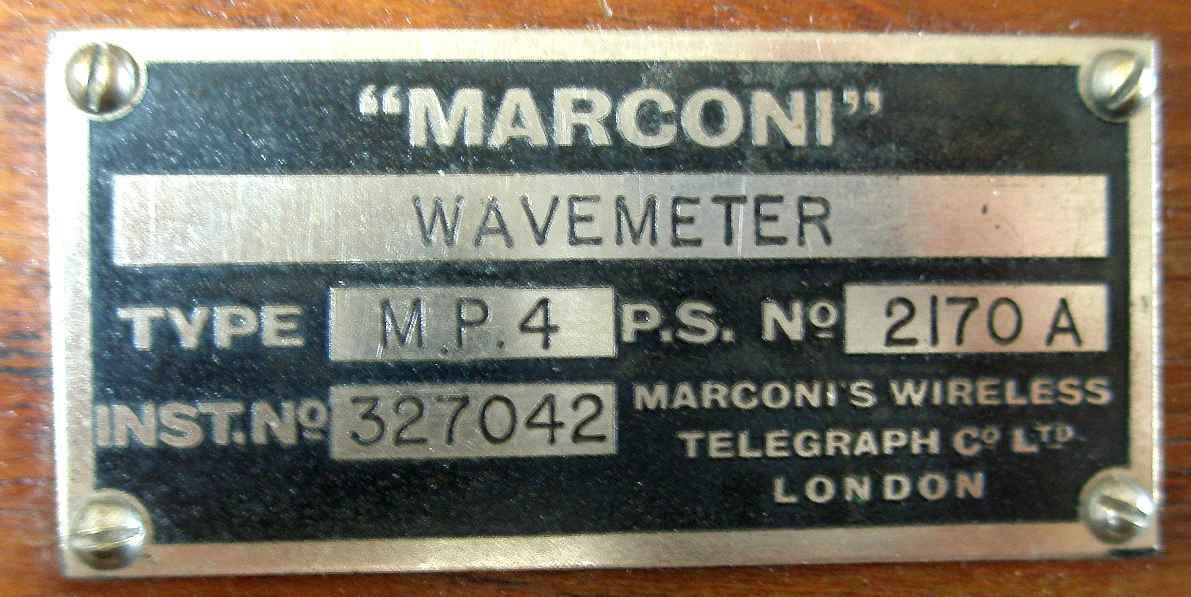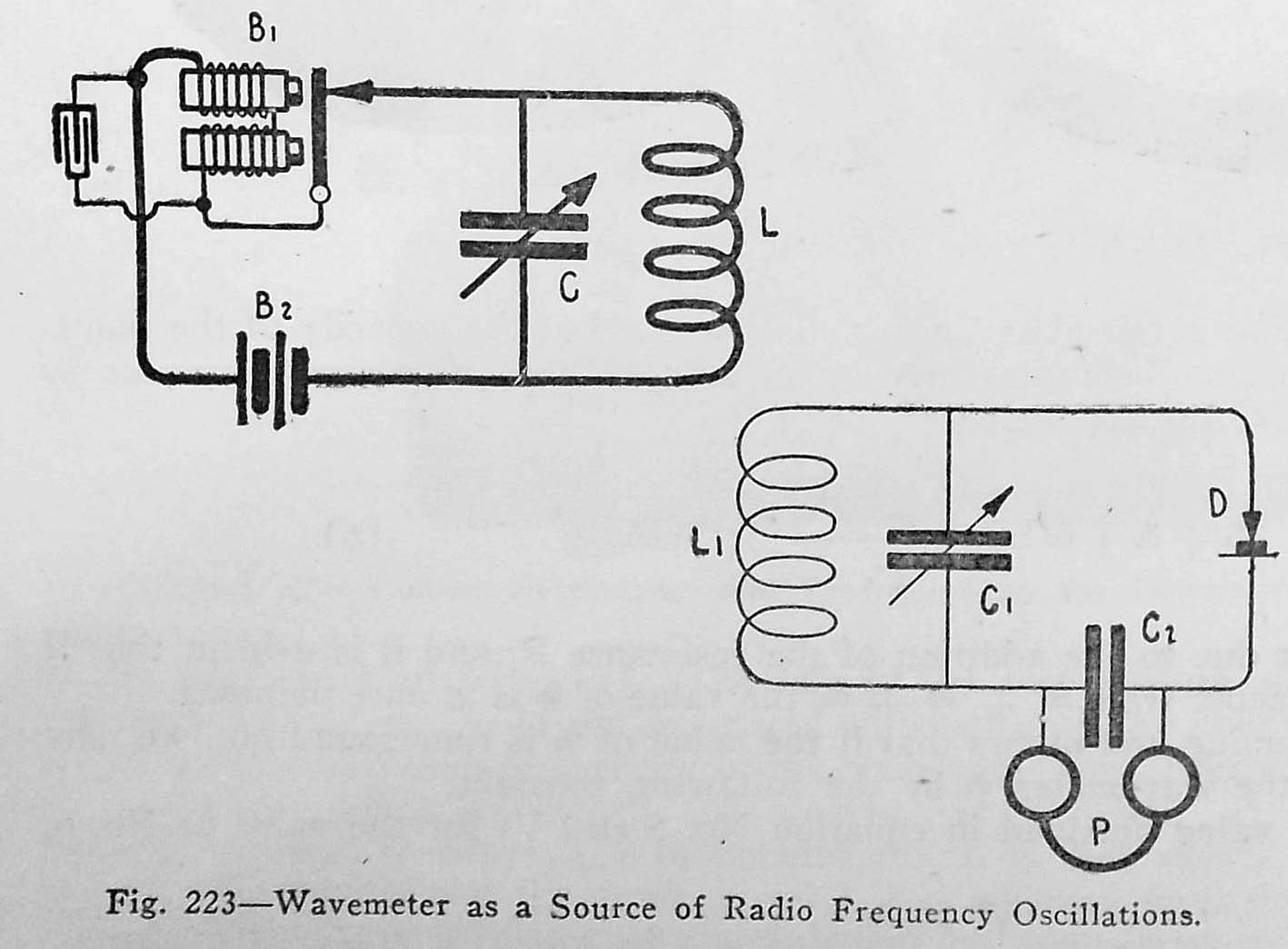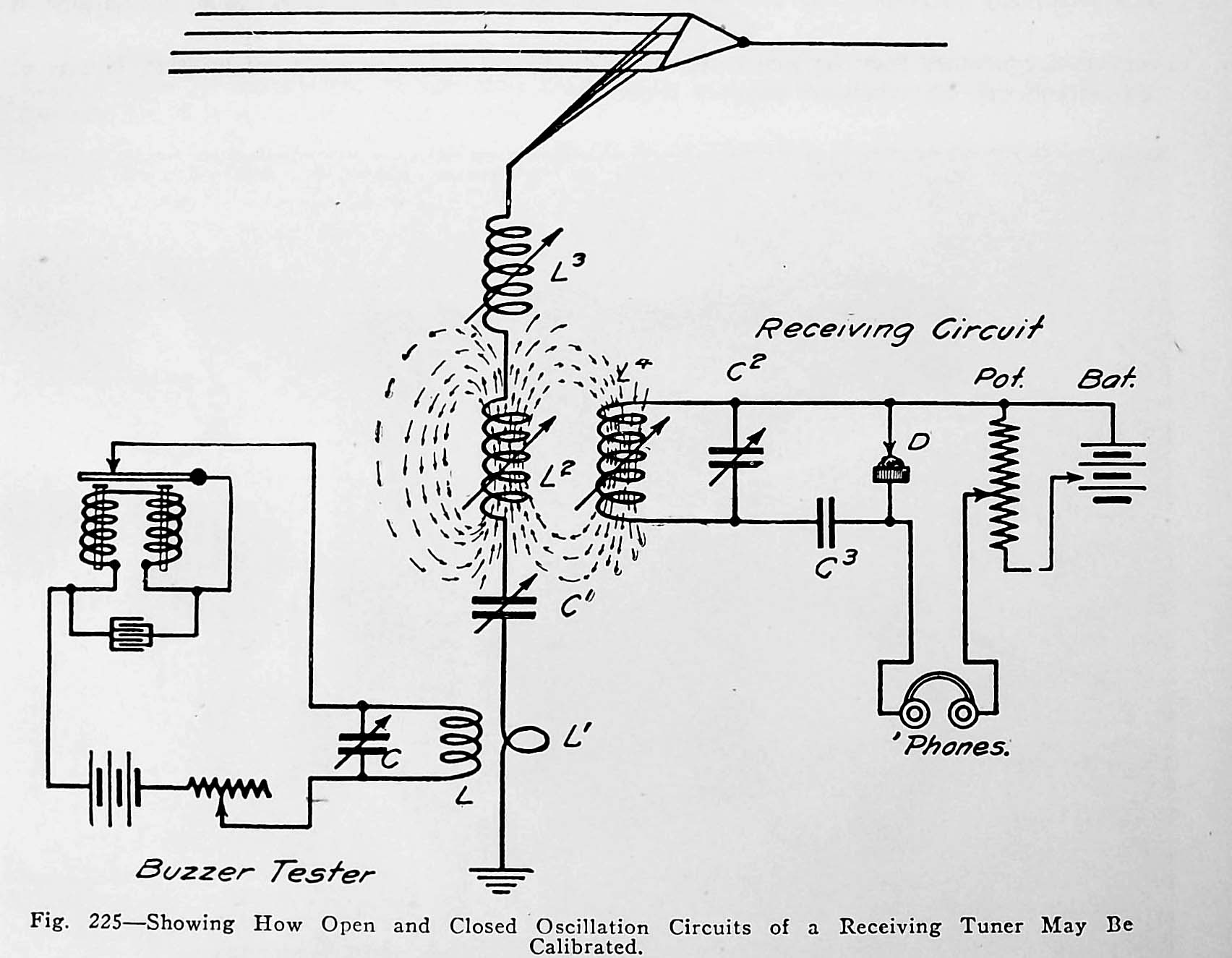 |
| MP4 front panel photo by Larry Dighera |
Frequency Range: It's a guessing game since all the dial shows is digits 7 to 8If the dial is read as 7 to 8 MHz, then that frequency is too high for the period of the instrument. .
If it means 70 to 80 metres (4585 to 3750 KHz respectively) , that too seems a a bit high.
However, if the dial means 700 to 800 meters (428 to 375 KHz respectively) that places it in the MF frequency range which is a closer match to the instrument's period,
Can anyone confirm what the digits on the dial actually mean? Contact: jerry.proc@sympatico.caManufacturer Marconi Wireless Telegraph Company Ltd. London, England
Comment: In Practical Wireless Telegraphy ( 1917 edition ) by Elmer Bucher, he indicates that the wavemeter/buzzer instrument can be used to calibrate the receiving apparatus as well as finding the most sensitive spot on the cat's whisker crystal. It does this by generating a signal. Page 167 from Bucher's Practical Wireless Telegraphy provides an explanation of the buzzer's application.
For more details on the MP-4, , please visit Larry Dighera's web document on this device.. http://dighera.com/marconi_mp4_wavemeter/
 |
| MP4 front panel photo by Larry Dighera |
 |
| The format of the nameplate appears very similar to that of Canadian Marconi home entertainment receivers in the 1930s and thereafter. (Photo by Larry Dighera ) |
+
 |
| Basic usage of the buzzer/wavemeter.(Practical Wireless Telegraphy 1917) |
 |
| Calibration of the Open and Closed Circuits
Simultaneously. The most satisfactory method of calibrating a
receiving tuner or adjusting the receiving system to a standard wave length
with a given aerial, is to place a wavemeter in inductive relation
to the antenna at all times as in Fig. 225. Download image to enlarge.
Since a change of coupling changes the tuning of the open and closed circuits, the exact adjustment of the circuits for the loudest response with any degree of coupling can be determined by setting the waverneter into excitation and causing it to act inductively upon the open circuit. This should be followed by variation of the inductance and capacity in both the open and closed circuits until a sharp maximum is obtained in the head telephones of the receiver. The loudest response, of course, is secured when the waverneter, the closed, and the open circuit are all in electrical resonance. At the same time, the crystal rectifier can be adjusted to maximum sensitiveness. (Practical Wireless Telegraphy 1917) |
Contributors and Credits:1) Larry Dighera. [LDighera(at)att.net]
2) Al Klase [ark(at)ar88.net]
3) Douglas Gordon [dmgordon(at)pacbell.net]
March 12/20